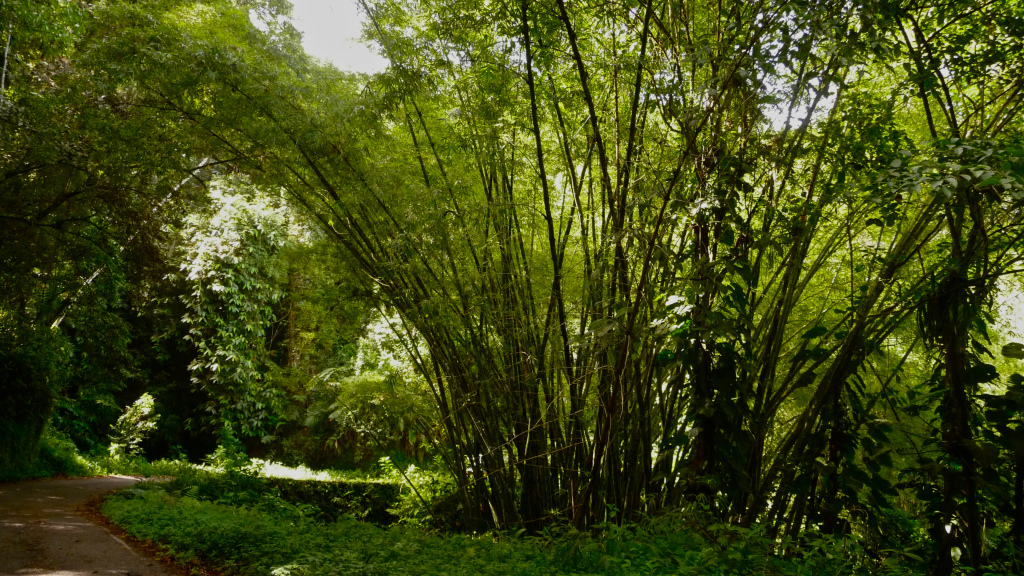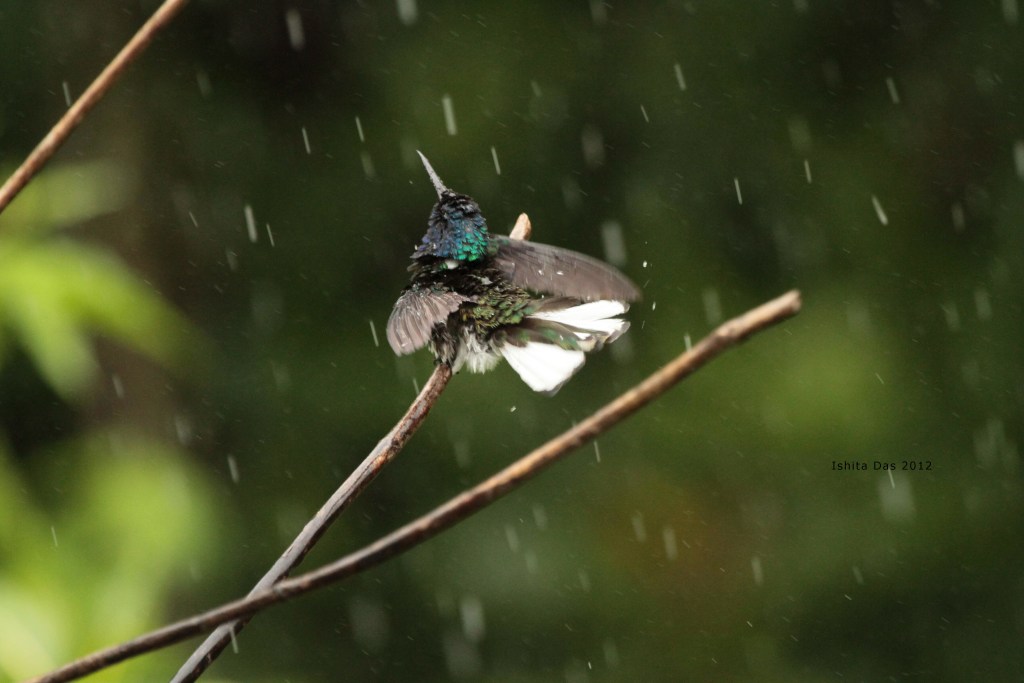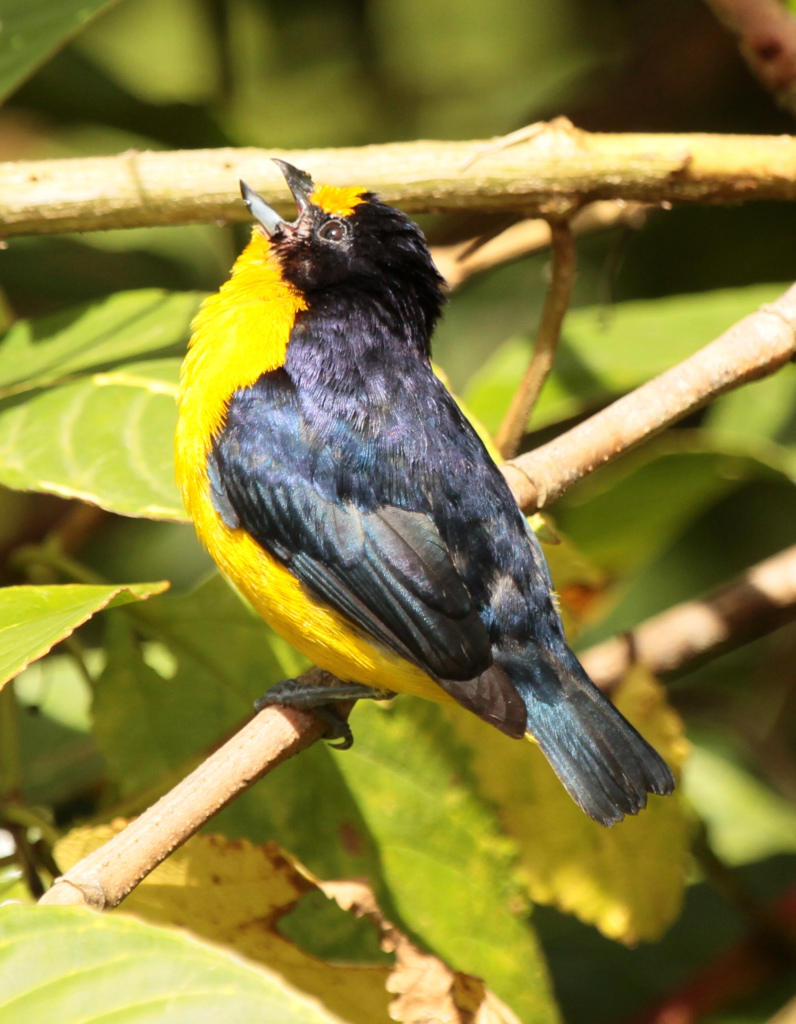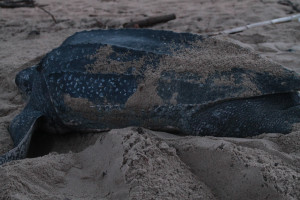Little did I anticipate the moving adventure that would follow, when I booked a group birding tour, by Caligo Ventures, five days in Trindiad and four in Tobago. It promised rainforests with Trogons, lodging with hummingbirds, turtles, caves and swamps..We were picked up at the Port of Spain airport by an Asa Wright Center guide, Mahese.
The Trinidad we saw was Mahese’s Trinidad, his pride in its people and what it had to offer us will remain etched in my memory whenever I think of this trip. As promised in the brochure, we woke up to the calls of hundreds of birds, but it was the cackling of the orange winged parrots that drove me to the door with the camera ( not the binoculars, which would be normal for a birder). We got ready before the gong for breakfast sounded. I went in to the spacious dining area in a mild state of anticipatory suspense to meet our ‘group’. Peggy and Kris were already at the table, with their binoculars, and I remember Peggy’s enthusiastic introduction and smile when she found out we were to be together throughout the trip.
Our first outing was to the ‘Discovery trail’ in the center premises looking for the bearded bell bird and golden headed and white bearded manakins. All three were eventually seen as we walked on the muddy forest trail and we even saw the manakin lekking (a courtship ritual) as they jumped up and down a branch quite close to ground and us. The golden headed manakins were less hospitable, as they lekked further away.
However, nothing had prepared me for the most amazing sight that I will forever treasure,, as I finally reached the veranda, trying to escape the rain ( at a rainforest, in the rainy season). The veranda of Asa Wright, is likely the most famous place at the center to birders visiting Trinidad. Hummingbirds zoom past less than a few inches from our noses. White necked jacobins were taking a shower in the rain, sitting with their tail feathers splayed out and necks outstretched, in what seemed like pure joy. They were all over the place, sometimes two three together on a branch. The sun made frequent appearances and all the washed colors of the showering hummingbirds had me mesmerized.
We saw, copper rumped, black throated mangoes, tufted coquette (only the female for me), rufous breasted hermits, white chested emeralds, one blue chinned sapphire that I photographed and juveniles of many of the same from the veranda over the next few days.What surprised me was the earnest, indignant territorial defense of the copper rumped for the numerous feeders.. They are little fiesty birds!
The crested oropendola’s nests were still active and we caught their display dances on the nest with the yellow tail bucking back and forth. We saw golden backed woodpeckers, beautiful green honeycreepers, both male and female feeding on tree fruit. We saw violaceous euphonias trying to swallow the fruit whole looking upwards as though in prayer, purple honeycreepers on the tree and the feeders alongwith the chit chatting bananaquits. Bare eyed robins, silver beak and white lined tanagers, again both male and female fed from the cut fruits on benches. From afar, with the help of the delightful guides at the center ( Molly and Elsa) we even saw channel billed toucans. Scaly naped pigeons, ochre bellied fly-catchers were also seen around the veranda.
As we entered a different habitat, the Aripo savannah, we saw hundreds of vultures soaring up on the thermals and landing, with their wings widespread, on field poles, side by side. Suddenly, beating the laziness of a hot morning, we saw a frenzy of swallow tailed flycatchers, trying to catch whatever swarm of bugs had been disturbed out of hiding. We also found the tiny white headed marsh tyrant and pied water tyrant, not to be left behind, Kiskadees introduced themselves and we caught an unexpected pinnated bittern and the gorgeous Savannah Hawk.
Trinidadians, from 25 per cent to 50 per cent are of Indian descent, brought here by the British to work at tea, and coffee plantations. None of the Indian or native Trinidadian languages have survived, and English is the only language, even though you really have to concentrate to get even one word. What has survived is the festival of Diwali, where almost for a week most Trinis turn vegetarian even if it is only to be respectful to their friends . Modern India remains bound to the West Indies via cricket and Bollywood movies.
Forest birding along the Blanchiseusse, was very fulfilling as we saw all the three trogons, violaceous, white tailed and white collared. We saw channel billed toucans far far off, as Mahese clearly keeps one eye on the road as he looks for birds with the other. We saw the gorgeously colored Mot-Mot, the drab tropical pewees and their chicks and a piratic flycatcher. At a lookout we waited (this time in vain) for the ornate hawk eagle, as we killed time with the swallow tailed kite and golden backed and lineated woodpeckers. The highlight was our first sighting of the rufous breasted jacamar.
On the night birding tour, Mahese lured the screech owl with his iPod and he found him on a low branch even when we thought we heard him high up. We saw white tailed nightjars and paraques fly out of the way of our van. We even saw our only camian, again right from the van, Mahese spotted it moving in the dark..
The vast protected wetlands in the Nariva swamp displayed terns, yellow headed caracaras and the rarer crested caracara with a juvenile.The palm forests here are used for watermelon cultivation by poor farmers, who often sell them from shacks on the side of the road.
On a full moon night we went to the Matura beach to wait for nesting leatherback females.We were led by our uber enthusiastic special guide for the trip- Francis, one of a handful of local volunteers, whose devotion (there is no other word for it), for the leatherbacks was quite contagious as he told us that the volunteers are responsible for the care and well being of the turtles and they ‘beat the shit out off’ any poachers’ that try to harm the endangered leatherback.. It was still daylight, close to 7 pm when Francis oozing even more enthusiasm told us that the chance of a lifetime awaited us as a female had come ashore in daylight and unlike most people, we could see everything in natural light. We rushed behind him and did see the female trying to nest, but she did not finish building and went back into the ocean. While Francis assured us it was not because of us being present, I am not sure about that. We were also allowed to touch her as she stopped to take a breath every four steps. We also saw a younger leatherback laying unformed eggs(no shells), that she still covered in the usual way with great care, while she was being tagged and measured by conservationists.I felt disoriented and a pang of regret, at witnessing this exacting cruelty of nature.
We found many tiny leatherbacks struggling out of the deep sand nests and heading straight to the ocean, with the remnants of a yolk sac still in their bellies. Only a tiny fraction of them will survive. The full moon’s beauty added to the perplexing delicate balance needed for the survival of these largest of sea turtles, the only sea turtle without a bony shell. It was an enriching experience as we saw how the lives of the locals become interwoven with the turtles, for a few months every year.
Ishita Das is a neuroscientist by training and recently graduated with a PhD from Johns Hopkins University, Maryland. And now, would like to write about things that make people think or feel something and in the process perhaps learn to understand the different shades of life. She continues to work with a group trying to make Autism more accessible to scientists and the public. She also contributes to a science and environment magazine.










